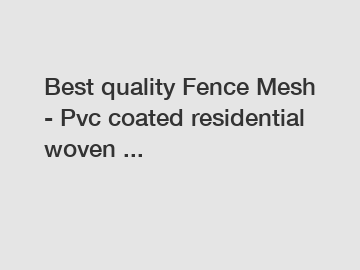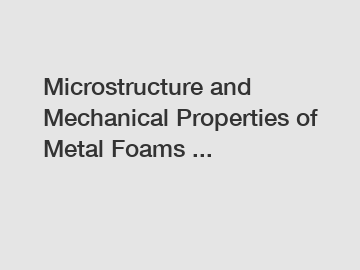Aluminum expanded metal wire mesh, with its intricate patterns of diamond-shaped openings and lightweight yet durable construction, finds a wide array of applications across various industries. Its versatility, corrosion resistance, and strength make it an ideal material for numerous purposes. Let's delve deeper into some of the key uses of aluminum expanded metal wire mesh:
Architectural Applications: One of the primary uses of aluminum expanded metal wire mesh is in architectural projects. Architects and designers utilize it for decorative purposes in building facades, interior design elements, and landscaping features. The mesh can be formed into unique shapes and patterns, providing aesthetic appeal while also allowing for airflow and light transmission.
Fencing and Security: Aluminum expanded metal wire mesh is commonly employed in fencing and security applications. Its robust construction serves as a barrier to unauthorized access while still allowing visibility and airflow. This makes it suitable for securing perimeter boundaries, industrial sites, and sensitive areas like airports and prisons.
Industrial Filtration: The mesh's open design makes it well-suited for industrial filtration applications. It can be used as filter screens in air filtration systems, oil and gas separation processes, water treatment plants, and industrial sieves. The uniform openings ensure efficient filtration while minimizing pressure drop and energy consumption.

Reinforcement in Construction: In the construction industry, aluminum expanded metal wire mesh serves as reinforcement in concrete structures. When embedded within concrete, it enhances tensile strength, crack resistance, and structural integrity. This reinforcement method is commonly used in concrete walls, floors, ceilings, and precast concrete products.
HVAC Systems: Heating, ventilation, and air conditioning (HVAC) systems rely on aluminum expanded metal wire mesh for various components. It is used in air vents, intake screens, exhaust grilles, and HVAC ductwork. The mesh's lightweight nature facilitates airflow, while its corrosion resistance ensures longevity in indoor and outdoor environments.
Safety Gratings and Walkways: Industries such as manufacturing, mining, and construction utilize aluminum expanded metal wire mesh for safety gratings, walkways, and platforms. The slip-resistant surface of the mesh provides traction, reducing the risk of slips, trips, and falls in hazardous environments. It is commonly installed on stairs, catwalks, mezzanines, and industrial flooring systems.
Explore more:The Benefits of Using Self Furring Diamond Mesh LathHow to Choose Carbon Steel Roofing NailsDouble Wire Mesh vs Traditional Fencing: Which is Better?Galvanised Gabions | Read This Article To Understand ...10 Questions You Should Know about Medium Carbon Steel SheetGabion Basket Sizes, Materials and Costs per Metre10 Questions You Should Know about K Lath Stucco NettingAutomotive Components: In the automotive industry, aluminum expanded metal wire mesh is used for various components due to its lightweight and corrosion-resistant properties. It is employed in radiator grilles, bumper inserts, engine compartment covers, and interior trim panels. The mesh enhances airflow, protects vital components, and adds a stylish accent to vehicle design.
Battery Enclosures: With the rising demand for electric vehicles and energy storage systems, aluminum expanded metal wire mesh is increasingly utilized in battery enclosures. These enclosures provide ventilation and thermal management for lithium-ion batteries, ensuring safe operation and prolonging battery life.
Food Processing and Packaging: In the food industry, aluminum expanded metal wire mesh is used for food processing equipment, conveyor belts, and packaging machinery. Its non-toxic, easy-to-clean surface makes it suitable for handling food products while maintaining hygiene standards.
Lighting and Acoustic Panels: The mesh's ability to diffuse light and sound makes it ideal for lighting fixtures, acoustic panels, and soundproofing applications. It is often incorporated into ceiling panels, lampshades, and speaker grilles to achieve desired lighting effects and acoustic performance.
In summary, aluminum expanded metal wire mesh is a versatile material that finds widespread use in architecture, construction, industrial filtration, security, automotive, and various other industries. Its combination of strength, durability, and aesthetic appeal makes it indispensable for a multitude of applications.
Explore more:The Role and Benefits of Shade Net in Greenhouse ...Things To Know Before Buying A Washable Air FilterIs razor wire the same as concertina wire?How to customize BRC fencing mesh?How to Cover a Boring Fence: Give Your Fence a Facelift ...Steel vs Aluminium Framed GlazingCreating a stainless steel wire mesh - fusion 360












Comments
Please Join Us to post.
0